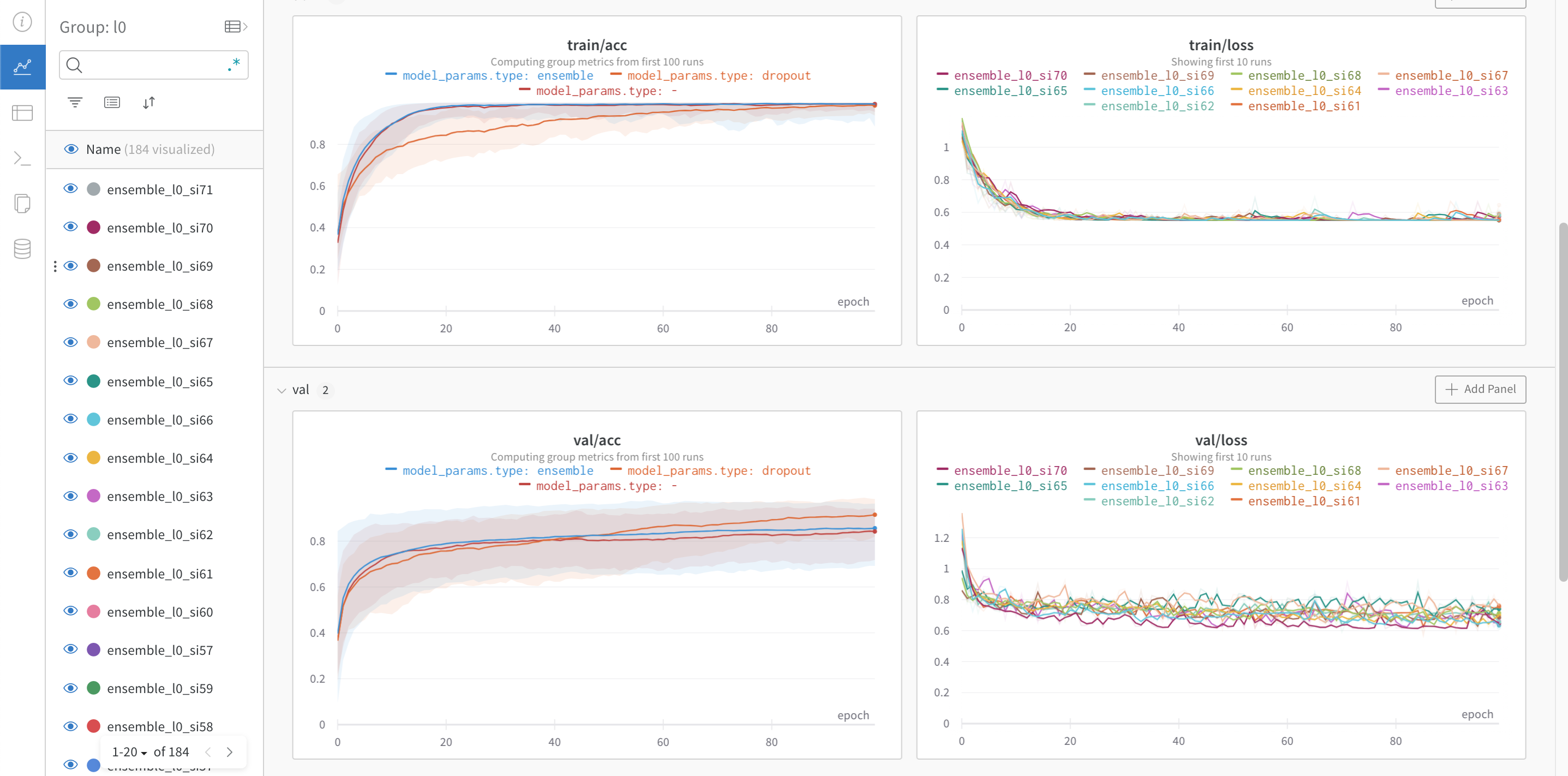[Paper] [Short Video] [Long Video]
Rose E. Wang, Julia White, Jesse Mu, Noah D. Goodman
Findings of EMNLP 2021
Contents:
To be good conversational partners, natural language processing (NLP) systems should be trained to produce contextually useful utterances. Prior work has investigated training NLP systems with communication-based objectives, where a neural listener stands in as a communication partner. However, these systems commonly suffer from semantic drift where the learned language diverges radically from natural language. We propose a method that uses a population of neural listeners to regularize speaker training. We first show that language drift originates from the poor uncertainty calibration of a neural listener, which makes high-certainty predictions on novel sentences. We explore ensemble- and dropout-based populations of listeners and find that the former results in better uncertainty quantification. We evaluate both population-based objectives on reference games, and show that the ensemble method with better calibration enables the speaker to generate pragmatic utterances while scaling to a large vocabulary and generalizing to new games and listeners.
Two steps before running experiments:
- Install the required libraries with
pip install -e . - In
calibrate_your_listeners/constants.py, change the directory paths to map to your local path.
This work uses Weights and Biases for reporting all the results. Make sure to set up an account (it's easy!) and login (this is also easy - just run wandb login in your terminal).
The two-line instructions can also be found here.
NOTE 1: All of the commands for replicating this work are summarized in calibrate_your_listeners/scripsts/commands.sh. Below, I'll describe these commands in more detail.
NOTE 2: This repository already contains pretrained listener models; you can jump to 'Training the speaker' if you don't want to train the listeners from scratch.
There are two training stages in this work. The first is training the listener(s), and the second is training the speaker.
Our work uses the following four listeners.
single-L0with small token space: A listener that's trained on the domain-specific token space. Our work uses the ShapeWorld domain which contains 15 tokens.
To train: python scripts/run.py --config-name=l0 wandb_params.dryrun=False
single-L0with large token space: A listener that's trained on a large token space. Our work uses GPT2's token space.
To train: python scripts/run.py --config-name=l0 model_params.vocab=gpt2 wandb_params.dryrun=False
dropout-based L0: A listener with dropout trained on a large token space.
To train: python scripts/run.py --config-name=l0 model_params.type=dropout model_params.dropout_rate=0.1 model_params.vocab=gpt2 wandb_params.dryrun=False
population-based L0: An ensemble of listeners trained on a large token space.
To train:
ensemble_size=15
for idx in $(seq 1 1 $ensemble_size); do
python scripts/run.py --config-name=l0 model_params.listener_idx='${idx}' model_params.vocab=gpt2 model_params.type=ensemble wandb_params.dryrun=False
done
Each experiment automatically logs the results (accuracy & loss on train & test) to Weights and Biases.
It should look something like this:

Our works trains the speaker with each of the four listeners.
To train the speaker with...
single-L0: Runpython scripts/run.py --config-name=s1 wandb_params.dryrun=False wandb_params.exp_name=s1_small_vocab
The speaker should generalize well in the small vocabulary domain.
The result should look something like this:
single-L0: Runpython scripts/run.py --config-name=s1 wandb_params.dryrun=False listener_params.type=ensemble model_params.vocab=gpt listener_params.ensemble_size=1
The speaker should overfit in this setting.
The result should look something like this:
dropout-based L0with<x>number of MC passes: Runpython scripts/run.py --config-name=s1 wandb_params.dryrun=False listener_params.type=dropout model_params.vocab=gpt model_params.dropout_rate=0.1 training_params.num_dropout_passes=<x>
The speaker should overfit in this setting.
The result should look something like this:
population-based L0with<x>number of listeners in the ensemble: Runpython scripts/run.py --config-name=s1 wandb_params.dryrun=False wandb_params.exp_name=s1_ensemble_update listener_params.type=ensemble model_params.vocab=gpt listener_params.ensemble_size=<x>
The speaker should generalize in this setting.
The result should look something like this:



